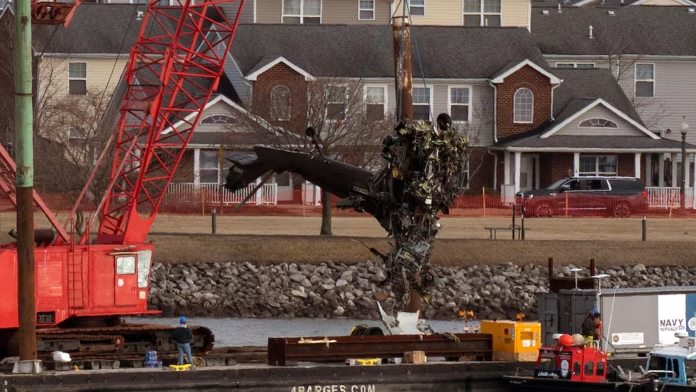President Donald Trump has blamed an “obsolete” U.S. air traffic control system for the deadly mid-air collision on January 29, involving an American Airlines flight and an Army Black Hawk helicopter near Washington, D.C. The crash killed all 67 people aboard both aircraft. Trump’s comments came after the National Transportation Safety Board (NTSB) informed Congress that the helicopter’s Automatic Dependent Surveillance-Broadcast (ADS-B) system, which tracks aircraft location, had been turned off during the flight. Texas Senator Ted Cruz criticized the decision, noting there was no national security reason for disabling the technology during a training mission.
In a speech at the National Prayer Breakfast, Trump condemned the existing air traffic control system, which he described as outdated, saying the U.S. has spent billions attempting to upgrade it. He proposed a new computerized system for control towers, claiming that the current one is ineffective. Trump’s remarks came amid efforts to improve the nation’s aviation safety, with Secretary of Transportation Sean Duffy and entrepreneur Elon Musk announcing plans to upgrade the system.
The Federal Aviation Administration (FAA) has been working on the NextGen program since the mid-2000s to modernize air traffic control. However, federal officials have raised concerns about staffing shortages and overburdened systems. Following the collision, the FAA confirmed that the air traffic controller did receive a warning about the aircraft converging but had not yet been able to prevent the crash.
Investigations revealed discrepancies in the aircraft’s altitudes: the American Airlines flight was at 325 feet, while the helicopter was reportedly at 300 feet, above its 200-foot flight ceiling. Investigators are working to recover more evidence from the wreckage, which is being removed from the Potomac River.
This crash, the deadliest in the U.S. since 2001, highlights long-standing concerns about air traffic control staffing and system limitations.





